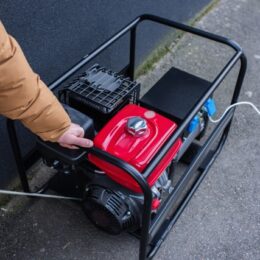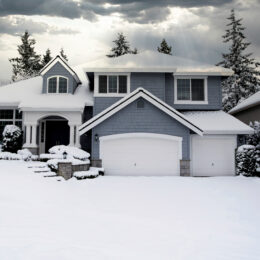
By Brian D. Smith
In the 2001 movie “Pearl Harbor,” Doolittle’s Raiders – 16 American bombers and their crews – fly low over the Pacific Ocean before releasing their explosives on industrial targets in Tokyo. But it wasn’t really the Pacific, it wasn’t really Tokyo, and the World War II warplanes weren’t really flying over a city, let alone dropping bombs.
It’s just as well, since they’d have been blowing up Indiana.
That’s right: The 4,000-acre U.S. Steel plant in Gary played the part of Tokyo, Lake Michigan stood in for the Pacific, and a helicopter filmed the aerial approach to the shoreline. The bombers were digitally superimposed afterward.

Such is the magic that can happen when Hollywood comes to Hoosierland – producing a film genre we’ll call Hoosierwood.
Hoosierwood has been around since movies were silent and came in two colors: black and white. It’s what brought Frank Sinatra to Madison, Dustin Hoffman to Metamora, Madonna to Huntingburg, and a trained reindeer to LaPorte.
But let’s review the ground rules. “Hoosierwood” refers to movies that were actually shot in Indiana, not movies that were merely set in Indiana. For instance, it’s all well and good that Richard Dreyfuss’ character lived in Muncie when he began sculpting mashed potatoes and obsessing about space aliens in “Close Encounters of the Third Kind.” But Dreyfuss never set foot in the Hoosier state during filming – nor, presumably, did any space aliens. Likewise, the script from “A Christmas Story” may have put little Ralphie Parker in Indiana during his quest for a Red Ryder BB gun, but the cast and crew earned their paychecks in Cleveland and Toronto.
Nor is it enough to haul cameras onto Hoosier soil and fire them up if the end product winds up on the cutting room floor. That’s what the city of Hammond experienced after its City Court was selected for a trial scene in the film “Natural Born Killers.” Woody Harrelson, Ashley Judd and other cast members came to town, as did a lengthy convoy of actors’ trailers, equipment trucks, food vans and additional vehicles attached to the production.
But director Oliver Stone omitted the gory 10-minute Hammond segment from the theatrical version of his movie, so even though it made the Director’s Cut, the movie doesn’t qualify as Hoosierwood. (And wouldn’t likely have provided material for a Hammond tourism campaign anyway.)
With all that in mind, let’s consider 10 noteworthy and star-studded examples of Hoosierwood, in no particular order:
1. “Hoosiers” (1986) – This film represents the Hoosierwood gold standard, given its homage to Hoosier Hysteria and its use of in-state locations and mostly Indiana basketball players. Marquee actors Gene Hackman, Dennis Hopper and Barbara Hershey join Indiana legends such as announcers Tom Carnegie and Hilliard Gates (who play, well, announcers), and Indiana Basketball Hall of Fame coach Ray Crowe, who coached Crispus Attucks to two state championships, cast as the opposing team’s mentor in the final game.

2. “Some Came Running” (1958) – Hollywood stars get no brighter than Frank Sinatra, Dean Martin and Shirley MacLaine, who appear in this tale of an embittered Army veteran (Sinatra) returning to his hometown. Downtown Madison provided the backdrop in this first Sinatra-Martin film collaboration, and naturally the townsfolk were starstruck, as when one woman broke through a rope barrier and flung herself at Sinatra while her husband protested, “Helen, you don’t even know the man!”

3. “Rain Man” (1988) – When Dustin Hoffman and Tom Cruise are marooned in a Missouri motel because autistic Raymond (Hoffman) won’t go outside when it’s raining, they’re actually inside a cabin on U.S. 52 in Metamora. But the former Hearthstone Inn and Cabins, whose sign is faintly visible in the movie, now houses a Pentecostal worship center.

4. “A League of Their Own” (1992) – Huntingburg’s 1894 grandstand and field served as the Rockford Peaches’ home stadium in this Penny Marshall-directed tribute to the All-American Girls Professional Baseball League. Prominent Peaches included Madonna, Rosie O’Donnell, Geena Davis and manager Tom Hanks. Bosse Field (Evansville) doubled as Racine’s home stadium in the final game; and Ribeyre Center (New Harmony) was the place where a hit ball smashes a window.

5. “Prancer” (1989) – Director John D. Hancock, who spent part of his childhood in LaPorte, filmed at area locations ranging from the Maple Lane Mall to New Carlisle’s stately Inn at the Old Republic. Sam Elliott, Cloris Leachman and young newcomer Rebecca Harrell carry this tale of an injured reindeer spotted by Elliott’s 8-year-old daughter (Harrell), who presumes it to be one of Santa’s.

6. “Speedway” (1929) – The Indianapolis Motor Speedway and other Indy settings frame this silent comedy, in which a racing mechanic (William Haines) pursues Indy 500 glory and an attractive woman.

7. “To Please a Lady” (1950) – The 1950 Indianapolis 500 found A-listers Clark Gable and Barbara Stanwyck in attendance, not as spectators but as stars getting filmed during race week. Gable plays a race driver and Stanwyck a newspaper columnist who becomes his love interest.

8. “Rudy” (1993) – Notre Dame campus locations abound in this real-life story of a practice squad player who dreams of suiting up for the Fighting Irish. Sean Astin and Charles S. Dutton headline.

9. “Breaking Away” (1979) – This film about a group of young townies competing in Indiana University’s annual Little 500 bicycle race contains enough city and IU locations to freckle a Bloomington map. Dennis Quaid and Daniel Stern accompany Dennis Christopher in his breakthrough starring role.

10. “Brian’s Song” (1971) – While arguably not Hoosierwood, having debuted on ABC-TV, this movie about fatally ill Chicago Bear player Brian Piccolo (James Caan) and his brotherly friendship with superstar Gale Sayers (Billy Dee Williams) incorporates scenes shot at the team’s former training camp, the now-defunct St. Joseph’s College in Renssalaer.

* * * * *
Brian D. Smith is a freelance journalist from Greenwood.
If you film it, they will come
By Brian D. Smith

The Indiana Film Commission website offers copious information for prospective Hoosierwood filmmakers, including a location directory (containing more than 500 photogenic sites) and a production directory cataloging local services from Accommodations to Wrangler (which includes professional dog trainers). Indiana Film Commission Director of Communications Amy Howell says her office fields about 50 to 60 calls a year from major motion picture studios. But other visual media – such as cable networks (the Travel Channel, the Food Network, etc.), foreign TV networks and independent filmmakers – also film in the state. “They bring a crew of three to four people and hire locals,” says Howell.
It’s that kind of economic impact that inspired the creation of the Gary Office of Film and Television in 1997. Rather than avoiding discussions about vacancies in the city’s industrial landscape, Gary caters to producers in search of “that gritty urban feel,” says Executive Director Ben Clement. For instance, in the 2011 flick “Transformers: Dark of the Moon,” an abandoned cement plant on Lake Michigan posed as Chernobyl, site of a 1986 Soviet nuclear accident. And both “Transformers” and the 2010 remake of “A Nightmare on Elm Street” utilized Gary’s gothic, crumbling City Methodist Church, the latter as Freddy Krueger’s lair.
Though some moviemakers seek out Indiana tourist attractions – such as Lincoln Pioneer Village in Rockport, used in the 1955 Burt Lancaster/Walter Matthau film “The Kentuckian” — some locations become tourist attractions as a result of their appearances in movies.
Travelers divert to Huntingburg to see League Stadium, home of the Rockford Peaches, notes mayor Denny Spinner (who still has the framed, uncashed check he received for his 7 seconds of face time as an extra in “A League of Their Own”). And the ball park continues to pay dividends as the site of community events and local baseball games.
Not every Hollywood call has a Hollywood ending, however. Back in 1985, the makers of “Hoosiers” went looking for a community with a school, a gymnasium and a downtown that could represent fictional 1950s Hickory – and found everything they wanted in Waveland. But the local school board had already approved a new elementary and would not postpone the project for the sake of a movie.
So New Richmond’s downtown, Nineveh’s school and Knightstown’s gym wore the Hickory label instead. And “Hoosiers” went on to become what USA Today has called the best sports movie ever made.
Today, that same 1921 Knightstown gymnasium, once slated for demolition, welcomes about 60,000 visitors a year. Now known as the Hoosier Gym, it hosts guided tours and high school basketball games, some featuring teams from as far away as New York and Mississippi, as well as annual “Hickory vs. Terhune” boys’ and girls’ all-star games for Indiana high school seniors.
And Waveland? Its 1937 gym and attached 1986 elementary school, whose construction deterred a movie, recently sold at auction for $50,000 to a buyer who plans to create storage units.
Of course, one movie gig doesn’t make every town a tourist magnet. But Huntingburg still gets its share of visitors who want to see the home of “There’s no crying in baseball.” And Columbus – whose internationally renowned architecture was spotlighted in the 2017 independent film “Columbus” – reports heightened interest in its modernist structures.
As these and other Indiana communities have learned: If you film it, they will come.
Brian D. Smith is a freelance journalist from Greenwood.



